Review: Sony Vaio VPCZ1190X (114GXS / 11Z9E)
Last Updated on Monday, 29 December 2014 10:53 Written by Naota Tuesday, 9 March 2010 05:22
NOTE: You can view our review of the Sony Vaio VGN-Z890 here. The VGN-Z890 is the older version of this laptop.
We have put in an order and have had all of our images refreshed. Please note that the photos here are all supplied from Sony’s website and other vendors. We are NOT claiming to have taken these pictures. Some photos may say Geekmontage on them just as an act of referring to our article. All photos have been edited to have a white background. Additionally photos have been shrunk to fit the layout or enlarged to make them easier to view. Thank you for reading!
Author: Naota
Product: Sony Vaio Sony Vaio VPCZ1190X CTO
Alias Models: VPCZ112GX/S – VPCZ114GX/S – VPCZ11Z9E – VPCzzX9e/B – VPCZ11DGX/SJ – VPCZ11CGX/X – VPCZ11FHX/XQ (Pre-built versions) VPCZ1190X-B CTO (Has XP Downgrade)
Price: $1899 and up (depending customizations)
Date: 02/27/2010
Rating: 4.5/5
OS Used in Review: Windows 7 Home Premium 64-Bit Edition
Pros: Backlit Keyboard, High quality/lightweight construction. Sturdy Monitor Hinge, Core i7 or Core i5 Processors, Attractive Design, Advanced and Powerful Hybrid Graphics System (requires no reboot). DDR3 Memory, good battery life, HDMI Connectivity with Audio Transmission, 3G Connectivity, Very Portable, GPS.
Cons: Screen is still kind of fragile. Very high premium. Much cheaper alternatives. Occasional fan noise. Some bloatware. Speakers aren’t loud enough.
Key Takeaway: The VPCZ1190X is an exceptional upgrade from the previous models. It offers everything that a power user would want and still gives great battery life. This laptop won’t satisfy hardcore gamers but then again, this laptop IS supposed to be ultra-portable.
Notebook Specifications:
Model: VPCZ1190X CTO
Processor: Core i5 2.53GHz(Notebook 1) and Core i7 2.66GHz (Notebook 2)
Motherboard: Intel® HM57 Express Chipset
Color: Silver
Display: 13.1” widescreen X-Black DuraView LED Backlight (1600 x 900 resolution – 16:9 aspect ratio)
Memory: 4GB DDR3-SDRAM-1066
Camera: Motion Eye camera/microphone
Wireless: Intel® Centrino® Advanced-N 6200 (802.11a/b/g/n) 2.4ghz & 5.0ghz; A2DP Bluetooth 2.1 + EDR. Built in Verizon Wireless Mobile Broadband
Video Card: Hybrid System – NVIDIA GeForce GT 330M / Intel® HD Graphics with 1 GB of VRAM (Requires no reboot to switch between both video cards)
Hard Drive: 192 GB (64 GB + 128 GB) SATA Solid State (SSD) Hard Drive
Optical Drive: CD-R/RW DVD-R/RW+- (DL) Plays/Burns CDs/DVDs
Battery: Standard (Extended Battery Option Available)
Connections: 3-USB 2.0, VGA, HDMI(audio/video), SD/Memory Stick Duo, Gigabit Ethernet Port 10/100/1000, Port Replicator, Headphone Jack, Microphone Jack, Express Card/34 slot
Sound: Intel High Definition audio
Weight: 3.07 pounds
Dimensions: 8.3” x 12.4” x 1.3” (Length x Width x Height – Inches)
Warranty: 1-Year Sony Warranty
Miscellaneous: Built in Biometric Fingerprint Sensor. Laptop may be bundled with headphones. Back-Lit Keyboard, Turn-by-turn GPS
Packaging:
The laptop comes wrapped up and well protected. You will find a copy of the warranty/operating information. You will also find the rechargeable lithium-ion battery, and the AC Adapter safely wrapped up too. Now here is something out of the ordinary! If you got any of the pre-built models you will be surprised to see a pair of noise canceling headphones waiting to greet you. They match the laptop too… coincidence? I think not! We didn’t get them since our models are not pre-built.*tear* but here is a photo of it from Engadget! Sony did not have any good photos of this on their site.
Connections:
The VPCZ1190X comes with fewer connections than the VGN-Z890 and VGN-Z790. They also change the existing ones a little bit as well and added some things too. I won’t say anything here but, the HDMI and VGA connections have been changed under the hood. You can see the video card section for more information.
3-USB 2.0, VGA, HDMI(audio/video), SD/Memory Stick Duo, Gigabit Ethernet Port 10/100/1000, Port Replicator, Headphone Jack, Microphone Jack, Express Card/34 slot
- Our opinion about the connections:
Even though the VPCZ1190X has fewer connections it has everything most users would ever need! They added a third USB 2.0 port, which makes me, well…. Extremely happy! I award five Points for Gryffindor Sony for listening to its users. The connections are relatively sturdy feeling as well.
The only real negative is that fact that the card reader is in the front. Side connections are the most appreciated. This laptop is pretty small though, so you do run out of room for putting stuff on the side. Some users won’t be happy about the lack of ESATA and Firewire, as many users have external hard drives and old cameras that utilize those connections.
Let us also hope that the next refresh comes with USB 3.0. Excellent job on the connections Sony!
In Front:
SD Memory Card Slot
Memory Stick Duo media slot (MagicGate Functionality)
Left Side:
VGA Output
Optical Drive
USB 2.0 Port
Right Side:
DC-In (See note below)
Gigabit Ethernet Port 10/100/1000
HDMI Connection Output (transmits audio/video)
2 x USB 2.0 Port (one in the middle and one awkwardly close to the front)
Express Card/34 Slot
Bottom:
Port Replicator
Note: The DC-In to charge your notebook is located on the side hinge of the laptop. We found this to be a bit of a pain, as you waste a lot of cord if your nearest outlet is located the opposite direction of your port.
Display:
The screen is small because it is meant to be mobile for executives on the go. The VPCZ1190X has a 13.1” screen with a resolution of 1600 x 900 – a 16:9 widescreen aspect ratio. Just like the previous models, the screen is backed by carbon fiber housing and uses LED backlighting. LED backlighting provides effective lighting for screens while utilizing little power. The laptop uses X-Black DuraView LCD technology. This technology gives a much needed layer of scratch protection to the LCD screen while improving the quality of the display.
- Our opinion about the display:
The screen on this laptop is well above average. The backlighting provides more than enough lighting for users. The colors were right on the money as well. If you feel that your notebook has too little or too much of a certain color, don’t worry. Windows 7 allows you to adjust the screen colors if you feel that they are not to your liking.
The LCD technology provides a nice layer of protection and gives the screen a glossy feel to it as well. The screen will be protected against low pressure scratches but is still subject to scratches. Also remember that the most common part to break on Sony’s Z-Series is the screen itself, so treat the screen with caution.
Processor:
This time, Sony refreshed its processor lineup and has offered Intel’s Core i7 and Core i5 technology.
All three of these processors use 35W of power, a 32nm manufacturing process and have a 2.5 GT/s DMI. They support a maximum of 8GB of dual-channel memory. Additionally, these processors utilize Hyper-Threading. This means that these processors are able to emulate four cores even though there are only two cores present. Hyper-Threading provides additional processing bandwidth and performance gains.
Notes:
- Intel refers to their L3 Cache as “Intel® Smart Cache”. It is nothing more than a marketing term.
- Turbo Boost is a technology that automatically will adjust the speed of your processor depending on what you are doing on your notebook. Think of it as over clocking your processor.
- The Core i5 520M is only available on certain pre-built/read-to-ship models only.
- Our opinion about the processors:
We were extremely pleased that Sony updated its processors. We had the opportunity to test the Core i5 540M and the Core i7 620M. Both of these processors provide noticeable improvements over their predecessors. Users will be able to run demanding applications without a problem and boot times have improved as well. I do believe that the price to upgrade to the Core i7 620M should’ve been 20-30 dollars cheaper though.
I would also like to state that the performance differences between both Core i5 processors are negligible. Even though we don’t have it today, the Core i5 520M and the Core i5 540M should have nearly identical performance. So do not worry if you have the 520M because the 540M will only perform slightly better.
Video Card:
Sony unleashes two new surprises here as well. Sony’s hybrid video card system has been updated. The VPCZ1190X uses the NVIDIA GeForce GT330M and Intel HD Graphics, utilizing 1GB of video memory.
The GT330M utilizes PhysX technology to process in-game physics and uses CUDA processing. CUDA processing frees up your processor by switching processing over to the video card for supporting software and multimedia. The video card will be able to reduce noise, sharpen edges and will ensure that the LCD Screen and external displays will be in high quality. The GT330M can broadcast in 1080P as well.
The Intel HD offers many upgrades over its predecessor, the Intel 4500MHD. This video card is rated to play HD video and Blu-ray. It can also effectively play some less demanding games. The Intel HD can improve image and video quality through its specialized scaling and rendering processes.
This VPCZ1190X can broadcast 1920×1080 for HDMI connections, and 2048×1536 for VGA connections. Sony’s patented Hybrid Graphics System allows the user to switch between Stamina Mode and Speed Mode without having to reboot. Stamina mode uses the Intel HD graphics card and gives a much longer battery life. Speed mode uses the Nvidia GT330M and delivers much higher performance.
- Our opinion about the video card:
Sony updating their hybrid video card system was perhaps one of the most important updates that they could have done. The previous models used outdated video cards that had some slight keeping up when running HD video.
Both of these video cards are very new and are very effective. The Intel HD could play HD video without a problem. The Intel HD could play many games such as World of Warcraft at low resolution and settings, but still had an occasional lag in the frame rate. The Nvidia 330M gave great improvement in performance and will do fine for many games.
We believe that the Nvidia card runs a little hotter than that Intel card, so keep that in mind. At the same time though, we recommend that you use the Nvidia card for watching movies, as we believe it will improve the video quality more than the Intel HD. Without a doubt, use the Nvidia card for games.
Now take a look at our benchmarks for more proof:
Benchmarks of the GeForce 330M & Intel HD Taken Using the Core i7 CPU
3DMark 05 (GeForce 330M – 1024×768):
Min: 11470, Average: 12888, Max: 13356 points
3DMark 05 (Intel HD – 1024×768):
Min: 2707, Average: 3304, Max: 3503 points
3dMark 06 (GeForce 330M – 1024×768):
Min: 6267, Average: 6701, Max: 7189 points
3dMark 06 (Intel HD – 1024×768):
Min: 1268, Average: 1746, Max: 1967 points
Cinebench R10 (GeForce 330M – Shading):
Min: 3301, Average: 3596, Max: 3878 points
Cinebench R10 (Intel HD – Shading):
Min: 1759, Average: 1946, Max: 2085 points
Note: Min, Average, and Max address the conditions the benchmarks were taken. Max is the best possible score you can get if you aren’t running anything else. Average is the conditions with some processes open and slight multi-tasking. Minimum addresses the worst case scenario with heavy multitasking, and lots of programs running.
F.E.A.R. Benchmark GeForce 330M:
Low Settings (640×480) no AA, low graphics: 397 FPS
Medium Settings (1024×768) no AA, medium graphics: 190 FPS
Higher Settings (1280×800) no AA, high graphics: 72 FPS
F.E.A.R. Benchmark Intel HD:
Low Settings (640×480) no AA, low graphics: 147 FPS
Medium Settings (1024×768) no AA, medium graphics: 23 FPS
Higher Settings (1280×800) no AA, high graphics: 9 FPS
Crysis Benchmark GeForce 330M:
Low Settings (800×600) No AA, low graphics: 145 FPS
Medium Settings (1024×768) No AA, medium graphics: 39 FPS
Higher Settings (1024×768) no AA, high graphics: 23 FPS
Crysis Benchmark Intel HD:
Low Settings (800×600) No AA, low graphics: 7 FPS
Medium Settings (1024×768) No AA, medium graphics: 0 FPS
Higher Settings (1024×768) no AA, high graphics: 0 FPS
Crysis Warhead Benchmark GeForce 330M:
Low Settings (800×600) No AA, low graphics: 142 FPS
Medium Settings (1024×768) No AA, medium graphics: 46 FPS
Higher Settings (1024×768) no AA, high graphics: 28 FPS
Crysis Warhead Benchmark Intel HD:
Low Settings (800×600) No AA, low graphics: 10 FPS
Medium Settings (1024×768) No AA, medium graphics: 0 FPS
Higher Settings (1024×768) no AA, high graphics: 0 FPS
World in Conflict Benchmark GeForce 330M:
Low Settings (800×600) No AA, low graphics: 112
Medium Settings (1024×768) No AA, medium graphics: 57
Higher Settings (1024×768) no AA, high graphics: 29
World in Conflict Benchmark Intel HD:
Low Settings (800×600) No AA, low graphics: N/A
Medium Settings (1024×768) No AA, medium graphics: N/A
Higher Settings (1024×768) no AA, high graphics: N/A
As you can see, the new Intel Card and GeForce card do an amazing job over their predecessors. Due to time constraints, World in Conflict benchmarks for the 4500MHD and Intel HD were not conducted. Additionally, we found Crysis and Crysis Warhead to be unplayable at any settings above Low for the Intel HD and 4500MHD, so we marked them with zeros.
You may be wondering why I didn’t conduct the above tests with both laptops. At first we did start testing with both, but then we found that the differences in the above benchmarks were entirely GPU dependent and the CPU made a negligible impact here.
Speakers and Sound Card:
The VPCZ1190X has standard sound and speakers. It uses Intel High Definition audio which is basic but gets the job done.
- Our opinion about the speakers and sound card:
Unfortunately this hasn’t change much from the previous models, but that is okay. This laptop is still pretty quiet due to its small size and small/average quality speakers. You may have trouble hearing while watching movies if there is any background noise in your area. The bass was also pretty low but once again, the speakers are pretty small. At such a premium though, I think the audio deserves an improvement.
Wireless and Networking:
The wireless received an upgrade because of the new motherboard the VPCZ1190X uses. The VPCZ1190X comes with a well-appreciated Gigabit Ethernet connection – offering high Ethernet speeds. The VPCZ1190X comes with the Intel Centrino Advanced-N 6200, which supports 802.11a/b/g/n and broadcasts at both 2.4 GHz and 5.0 GHz. The laptop also supports Bluetooth 2.1 + EDR, and A2DP. Users have the option to use this laptop’s built in Verizon Wireless Mobile Broadband.
- Our opinion about the wireless and networking:
The wireless worked very well. We found the range and speed to be above average for wireless solutions. After configuring the wireless to our network, we found consistent performance. Just like the previous model, the Bluetooth performed as average. We were not able to test the Verizon Mobile Broadband because… well we aren’t customers. Sorry!
Keyboard and Mouse:
The VPCZ1190X uses a “chiclet” style, aluminum-backed keyboard. That means that all the keys are spread apart and are not connected to each other. All keys are gently coated and have a comfortable feel to them. The mouse pad offers scrolling although it is not indicated. As indicated previously, you will find an option to switch between speed and stamina modes for your performance. This laptop also has a new feature from the previous model, a backlit keyboard with a sensor that adjusts the brightness automatically. You will also notice that the space bar is slightly further away from the touchpad in this model. The keyboard also has a Sony “built-assist” button which launches their Vaio Care program so you can conduct maintenance, and troubleshooting.
- Our opinion about the keyboard and mouse:
I have to say, Bravo! Sony did an excellent job with the keyboard and mouse. First off, you will be pleased to see that the backlight that Sony added is of excellent quality and provides great lighting. The keys feel great and are well responsive. Unfortunately the “page down” and “page up” aren’t standalone and require hitting “function + down” or “function + up” to use. That is understandable due to how small the laptop is.
The touchpad and buttons performed standard and got the job done. There was no multi-touch, and we did not try to install any third party add-ons from Google. Finally, the additional space between the touchpad and the space bar was noticeable, as I was not accidentally hitting the pad as much while typing. The touchpad performed completely normal for us.
Heat:
The temperatures with this laptop were fine under all conditions (long use, watching movies, processing, and gaming.) The bottom of the laptop and the keyboard gets a little hot but stays very manageable. You will have to wear a pair of pants if you want this on your lap though. Additionally, the laptop was slightly hotter when the Nvidia card was used instead of the Intel card.
Remember to regularly clean out the dust in your fan with compressed air to keep temperatures low and to help your laptop to live longer.
When testing heat for both the Core i5 and the Core i7, we found that the heat was almost equal for both laptops. The Core i7 laptop felt like it could’ve been a little hotter, but it was barely noticeable.
Battery:
Well I listened to your comments and have included the battery life with the i7 processor and the i5 processor. We used the standard battery while conducting our tests. First we will discuss the Core i7 with both video cards, and then the Core i5. Our tests were conducted using Mobile Mark 2007.
- Battery life with the Core i7 620m:
When testing the NVIDIA GT 330M, we found that the battery life reached approximately 3 hours and 29 minutes. The Intel Integrated graphics achieved a battery life of 4 hours and 21 minutes.
- Battery life with the Core i5 540m:
When we conducted our tests with the NVIDIA GT330M, we found the battery life to be about eight minutes shorter longer in both of our tests. Not much of a difference.
- Battery life with the Core i5 520m:
Although we didn’t have the Core i5 520m, we assure you that the battery life will be almost identical to the 540m.
We estimate that the extended battery would give another hour and a half to your battery life. The extended battery also does an excellent job at angling the laptop, making typing easier and increasing airflow (lowering the laptop temperature.)
Note: In our Mobile Mark test, we use 50% Brightness and leave the Wireless/Bluetooth on. Typically companies conduct this test with Wireless/Bluetooth off and at 20-30% brightness. We find that those settings give a more accurate representation of battery life.
Battery Drain:
We found that the laptop did have a little bit of battery drain. I found the battery drain to be pretty minor for me, and would only lose a few percentages of battery over time. I suspect temperature can slightly speed up or slow down drain as well, but I didn’t test for it.
Quality Control:
The VPCZ1190X is a pretty sturdy laptop with high quality parts. With that said however, we are always worried about the LED screens for the Z Series. The screens are high quality and feature a protective coating but to be honest, it is quite clear that it could break. If this laptop is taken care of I can see it working well for a long time. The fan may start to act up more over the long run though.
I state the following with ever Z-Series model that I have reviewed:
- Sony claims that the biggest problem with this laptop is that the screen on it cracks and breaks so be careful and/or get a warranty.
- Just because you can get premium carbon as your laptops color doesn’t mean you are going to get added protection, as it is 99.9% just for visual effects and not protection.
Solid State Hard Drives (SSDs):
Due to user requests I investigated the drives of the laptop as quickly as I could. First I would like to state that the drives our manufactured by Samsung. Samsung has been known for making outstanding solid state drives that run marvelously and controllers that run well too.
I want to state it right here that these drives are proprietary and cannot be upgraded to other company’s hard drives. They use a special system that is unique to the Sony Z Series and its special power saving design.
Solid State Drive Degradation:
Obviously these drives do not have TRIM support, which helps combat SSD degradation. Samsung’s drives and controllers are more resistant to degradation too. Don’t get me wrong though, we were able to experience SSD degradation.
First we made an image of the laptop, and then we loaded the baby up with tons of files and performed many rewrites, deletes and edits. After reaching near full capacity of the drives we were feeling the degradation for sure. Some writes took well over thirty seconds longer, which is unacceptable but again, not Sony’s fault.
After experiencing such degradation, we completely wiped the drives clean, and restored our laptop using Acronis True Image. The process takes a few hours but we were back up and running at normal performance. Should you be expected to have to do this? No, but it’s not Sony’s fault – it is Sold State Drives as a whole. If you decide to completely format, you can download the Sony VPCZ1190X raid drivers at Sony’s website and There you can get your RAID drivers and sync your SSDs again with no problem.
*Edit*
I realize that I wasn’t clear on this (it was 6am after all =] ).
Making an image of a Raid 0 Array can be tricky. Because of this you can clone your raid array to an external drive, and then break your array. After doing this, you can wipe your drives, set one hard drive as your primary drive and then can restore your array to that drive and your image. This method works only if you have enough space on both of your raid drives. If you have any doubts while doing this, stay away from this method. I want to make it clear that I am no expert in Raids. You may want to consult with other sources as well.
Note: When wiping your drives, always use a secure method that actually wipes the drives clean. Intel actually has software for this and recommends that people use it on their solid state drives.
Miscellaneous Information:
This laptop is available in silver and premium carbon fiber regularly but is offered in two signature colors – Metallic Mosaic, and Glossy Premium Carbon Fiber.
This laptop has a biometrics slot to read your fingerprint, but we did not elect to use this feature. Another feature we did not utilize is the GPS.
You will be pleased to know that the chassis of this laptop is in fact carbon fiber. This is how the laptop maintains its low weight while still feeling tough.
Conclusion:
I just have to say… Wow! Sony did an excellent job at creating the VPCZ1190X for sure! Sony kept their already amazing design and made it better! The core i5 and core i7 processors and the refreshed hybrid graphics system brought new life to the laptop. Sure there are issues with SSD degradation, and yes, the speakers are quiet even though this laptop is priced at such an extreme premium. That is why I rate this laptop a 4.5/5.
It was a pleasure to review this laptop for you all. I look forward to all your comments and questions. Thanks for visiting us and please come back again.
Remember, your opinions mean a lot to me!
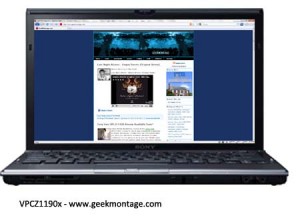
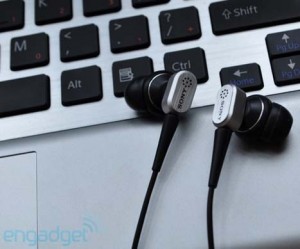

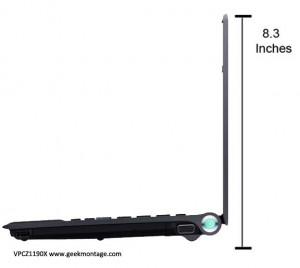
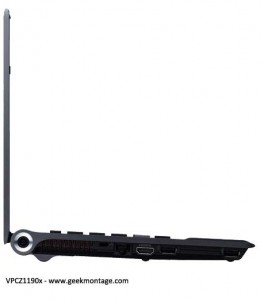
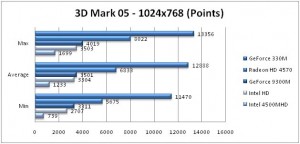
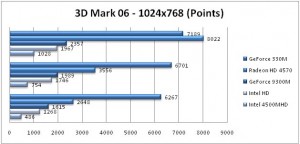
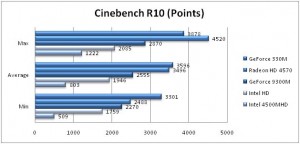
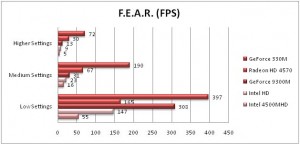
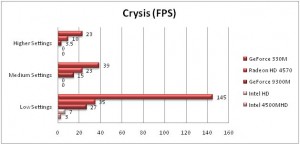
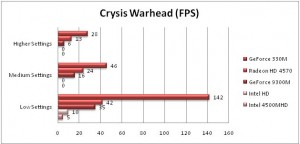
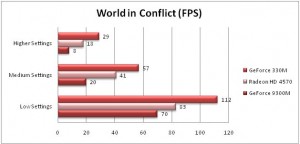
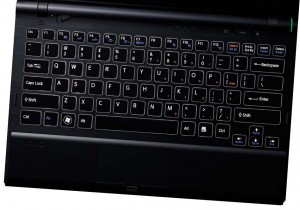
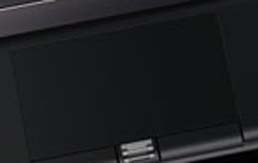
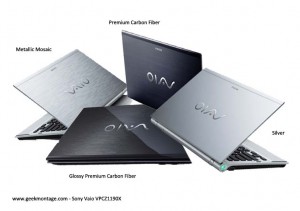
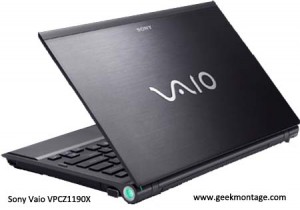
[…] Sony Vaio VPCZ1190X (VPCZ114GX/S / VPCZ11Z9E) Review […]
[…] review the laptop. I really hope the information helps you all in your decisions. You can view my review of the Sony Vaio VPCZ1190X here. […]
[…] VAIO VPCZ114GX/S and VPCZ11Z9E/B Reviews Soon *Update* You may read my review of the Sony Vaio VPCZ1190X […]
[…] VAIO VPCZ114GX/S and VPCZ11Z9E/B Photos and Information *Update* You may read my review of the Sony Vaio VPCZ1190X here. —– Today we have information and photos of the Sony Vaio VPCZ114GX/S and […]
Thank you for this great review. I am uin the UK and I am thinking of buying this laptop but I have been stumped on whether to get the Core I5 540m or I7 620m. By the looks of it the I5 is probably better value.
Another question is the SSD degradatin – how bad is it? Will I have to re-format my drive often? If I just left it will the drive eventually hit standard HDD performance or will it plateau and stay at a certain performance? Sorry for the noob question but I really dont know much about SSD drives.
Thanks
When you say “Some writes took well over thirty seconds longer”, you mean one write that used to be instantaneous now take over 30 second or a write operation that took 10 minutes now take 10 minutes 30 seconds?
Great review! I’m in the market for a new laptop and and am leaning heavily in the direction of the VPCZ1190X due to its portability combined with high-end performance specs. A couple things you mentioned in the review sparked my interest. First, the “cracking” screen phenomenon: where exactly are these cracks likely to occur. The carbon-fiber material doesn’t add protection against this? Secondly, you mention that “hardcore gamers” will probably not be satisfied. I wouldn’t consider myself a hardcore gamer, but I do want this machine to be able to run pretty much any program/game for several years into the future. The specs on this machine (graphics card, lots of RAM) would make me assume this would be the case. I’m just wondering where the gamer dissatisfaction might stem from.
Can you please post more infor on the SSD degradation, I concur with the other posts, not very clear and this is one of the most important taska in a test.
can i know where this laptop has been made? I mean, is it a CHINESE or JAPANESE?
@Saeed – Different parts of this laptop were manufactured and/or imported from different countries.
Interesting and informative, thanks! Just curious, have you compared this to an HP Envy 13? Any thoughts on that? Those seem to be the two premium 13s out there, and even though the Sony has more feature availability, the Envy is pretty impressive, and potentially less $$.
Your review was thorough except for covering the laptop speakers. Do you have any further details on why you said “Speakers aren’t loud enough.” I have this same model and the laptop speakers are not loud at all, and sound very tinny, ie no base. The headphone jack does a bit better, but sucks if you want to use the speakers. Did you also find the speakers to be tinny as well as not loud at all?
@Adam – I have not had the chance to compare it to the Envy unfortunately. I do know that both of these laptops are solid builds though and you should be happy with either one.
@Joe – I did find the speakers to be tinny actually. It is because they are very tiny. This is most likely due to the small size of the laptop. Most small speakers (minus Bose and a few premium brands) tend to be very tinny. Thanks for the question!
@AJ – This laptop can run games like WoW of course. Most laptops aren’t meant for hard core gamers. By this I mean more demanding games like Crysis of course. Some of my bench marks should give you a good comparison.
@Kit Lee, River, and Chris – I am at all no expert on SSD Degradation so I won’t be able to give you the level of detail that you want. Having little time with the laptop and personally using a 7200RPM Western Digital Drive at home, I haven’t come up with the best ways to test SSD Degradation. I have just tried replicating what was done at AnandTech to the best of my ability. All I can say is that you will notice this degradation. I apologize for not giving you all a more thorough answer. I am sure you can find much more thorough reviews VIA Google on this laptop though. =)
Sorry for the delayed responses everyone. Thank you for your questions.